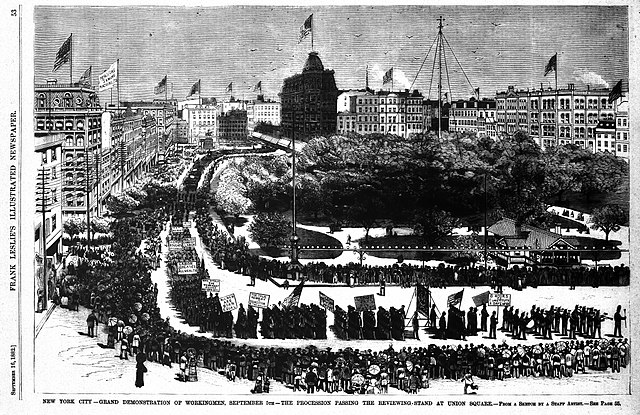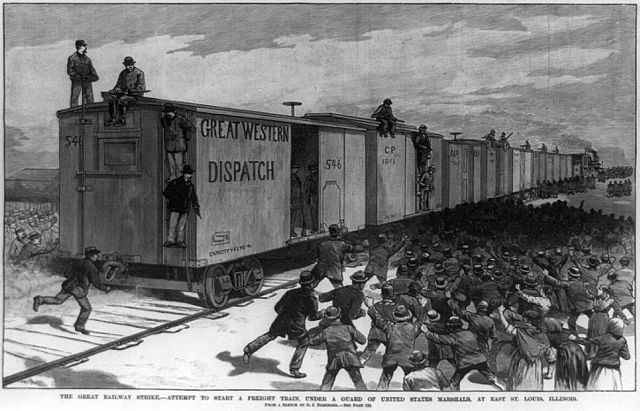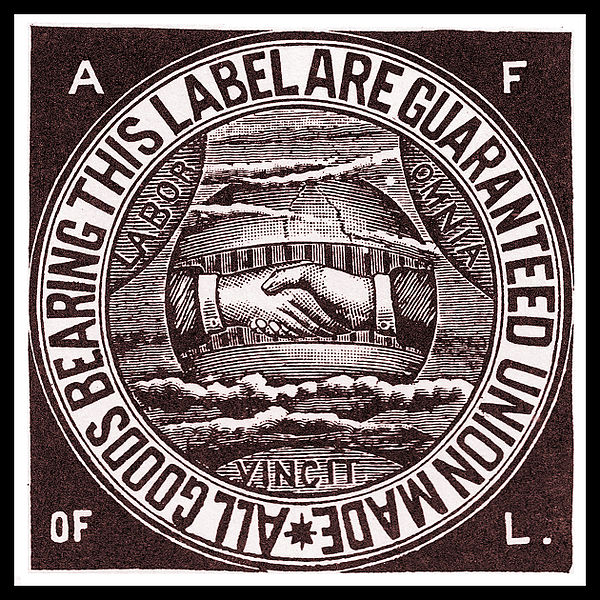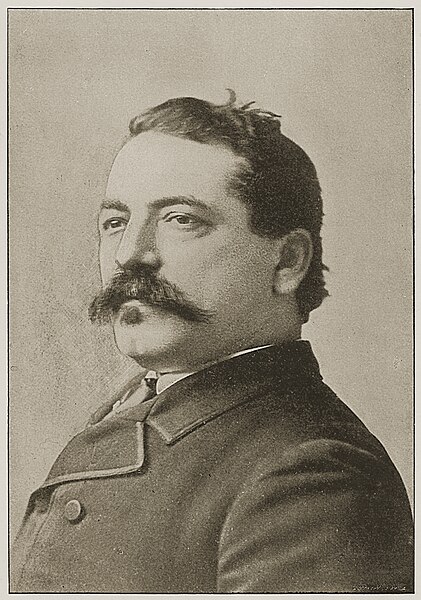Labor Day is a federal holiday in the United States celebrated on the first Monday of September to honor and recognize the American labor movement and the works and contributions of laborers to the development and achievements of the United States.
Labor Day Parade in New York's Union Square, 1882
P. J. McGuire, Vice President of the American Federation of Labor, is frequently credited as the father of Labor Day in the United States.
Labor Day parade on Pennsylvania Avenue in Washington, D.C., c. 1894
Labor history of the United States
The nature and power of organized labor in the United States is the outcome of historical tensions among counter-acting forces involving workplace rights, wages, working hours, political expression, labor laws, and other working conditions. Organized unions and their umbrella labor federations such as the AFL–CIO and citywide federations have competed, evolved, merged, and split against a backdrop of changing values and priorities, and periodic federal government intervention.
The Great Southwest Railroad Strike of 1886 was a trade union strike involving more than 200,000 workers.
The American Federation of Labor union label, c. 1900
Samuel Gompers in 1894; he was the AFL leader 1886–1924.
New York City shirtwaist workers on strike, taking a lunch break







